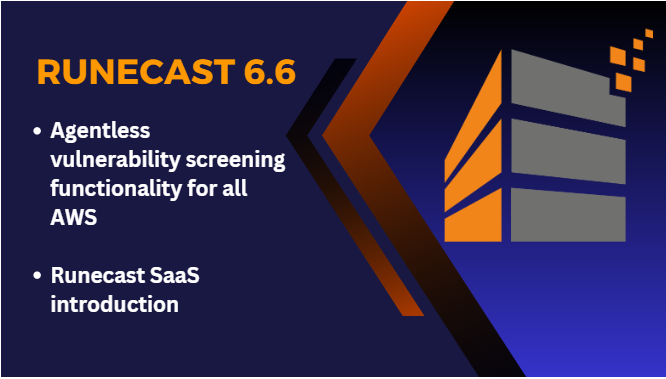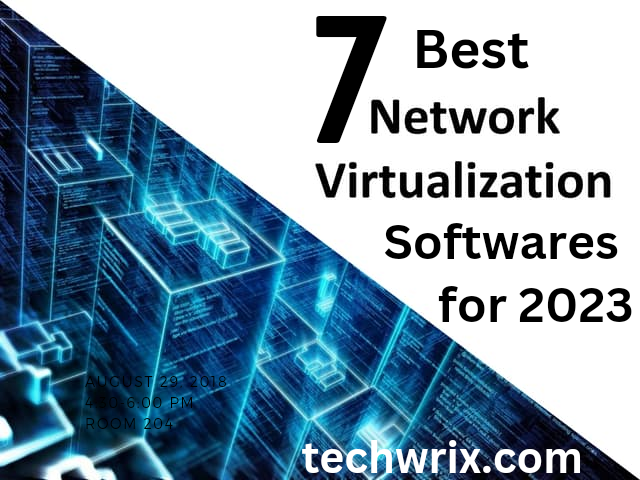With sophisticated AI-driven vulnerability management, compliance audits, and container security, Runecast Solutions Ltd. introduces Runecast 6.6, a Cloud-Native Application Protection Platform (CNAPP). Innovative vulnerability scanning solution, which is SaaS based, improves operational effectiveness and proactive risk mitigation. Runecast is trusted for mission-critical stability by renowned companies including Avast, DocuSign, and DLR.
Previously, Runecast introduced Runecast 6.5.5 that improves compliance posture and user experience.
Runecast 6.6 Released with Agentless Vulnerability Screening and SaaS
Runecast 6.6 dramatically improves operating system security visibility, adds new deployment options, and expands your environment’s CVE checks and security profile coverage. It includes additional coverage for ISO 27001 for Microsoft Azure, all Ubuntu CVEs going back to 2020, and design changes that assist the dashboard select essential information.
Runecast 6.6 also brings two significant milestones including:
- Agentless vulnerability screening functionality for all of your AWS EC2 Linux instances, streamlining operating system security.
- Runecast SaaS, which is for anybody who needs to reduce the IT burden on an organization by handing over infrastructure administration, maintenance, and security obligations to the service provider.
Agentless Vulnerability Screening Functionality for All AWS
Agentless vulnerability detection for Amazon Web Services (AWS) is now available in Runecast 6.6 which adds the following features:
Simplify OS Security
By delivering an agentless vulnerability detection function for AWS EC2 Linux instances, this new capability aims to simplify OS security. Due to the difficulty of deploying and upgrading agents in dynamic cloud systems, vulnerability screening is now especially practical in those settings.
Execute Vulnerability Scans Without Installing Any Agents
Users may now execute vulnerability scans across all of their Linux EC2 instances using Runecast 6.6 without having to install any agents. In addition to making the setup and scanning process simpler, this also lowers the administrative burden of monitoring agents and any potential performance concerns.
Improves Visibility
Agentless vulnerability scanning greatly improves visibility into operating system security since it vastly increases the number of vulnerabilities that may be found, giving a more thorough awareness of possible security concerns.
Identity and Access Management (IAM)
With the recently implemented role-based authentication for AWS accounts, security and usability are also prioritized. Runecast uses AWS’s Identity and Access Management (IAM) to make sure that only authorized users can run scans, enhancing the setup’s security and efficiency.
Read More: Runecast 6.5.5 Improves Compliance Posture and User Experience
How to Enable Agentless Scanning
There are two steps for agentless scanning:
Step 1: Select Regions
Step 2: Setup Resources:
After that click the “Save” button.
Introduction to Runecast SaaS
The Runecast SaaS offers the following features:
Scalability in Runecast 6.6
The benefit of scalability is offered by Runecast SaaS without the requirement for intricate infrastructure administration. As your company requirements change, you can easily scale your resources up or down, assuring maximum performance and eliminating the complexity of hardware acquisition and updates.
Connection through API
Users may connect to AWS, Microsoft Azure, or Google Cloud through API to check for possible vulnerabilities, compliance breaches, and more. These services are supported by our on-premises version as well. Users will need to allow public access for the API when using Runecast SaaS to scan Kubernetes, for instance when K8s is deployed on AWS.
Decreases the IT Strain
By offloading infrastructure maintenance and, for this release, enabling agentless AWS vulnerability assessment, the SaaS version of Runecast decreases the IT strain on businesses. Anyone may use the interface to get Runecast SaaS and conduct agentless vulnerability scanning on AWS EC2 Linux systems.
Additional improvements
Accessible Image Scan Results Immediately
Rapid access to vital data is crucial in the age of containerization and microservices. With version 6.6 of Runecast, users may now retrieve the results of a container image scan by a URL, the Runecast API, or the Kubernetes Admission Controller. This saves the laborious process of manually choosing the organization and makes it easier to go to the necessary information.
Enhanced Utilities
You’re always informed thanks to Runecast v6.6. Now that the platform exposes failed analyses and licenses that are about to expire, it is possible to keep track of these important pieces of data. This improvement aims to enhance your entire experience and enable you to quickly and wisely make selections.
Content Augmentation
The content coverage has significantly increased with Runecast 6.6. The well-known ISO 27001 profile, a framework for information security management systems, now covers Microsoft Azure. This is beneficial for firms using Azure since it makes it easier for them to efficiently maintain compliance with global standards.
Runecast has also incorporated all CVEs (Common Vulnerabilities and Exposures) for Ubuntu going back to 2020. This makes it much simpler to strengthen security on any equipment running Ubuntu by enabling users to receive thorough insights into potential vulnerabilities.
Every two weeks, Runecast receives fresh knowledge definition updates that contain tests for significant vulnerabilities such as CVEs, VMSAs, and others.
Conclusion
With Runecast 6.6, you can streamline operations while enhancing security and ensuring compliance in hybrid cloud enviornments. This update makes it easier to find and rapidly fix vulnerabilities by providing agentless vulnerability screening for AWS, easy access to container image scans, usability upgrades, and content improvements.
Ready to optimize your data center operations and improve security posture? Try Runecast 6.6 to ensure compliance across hybrid cloud environments.




